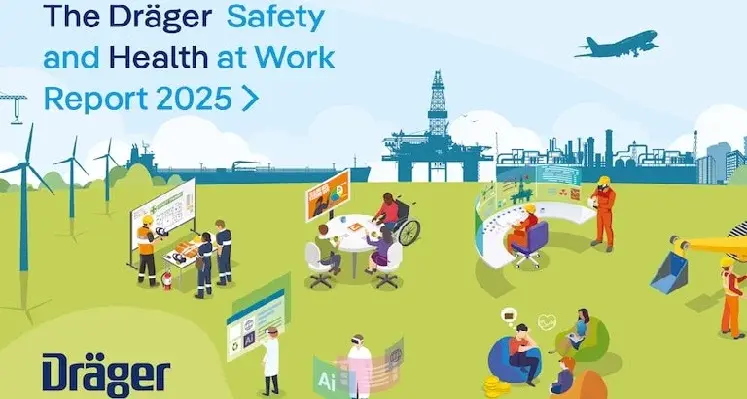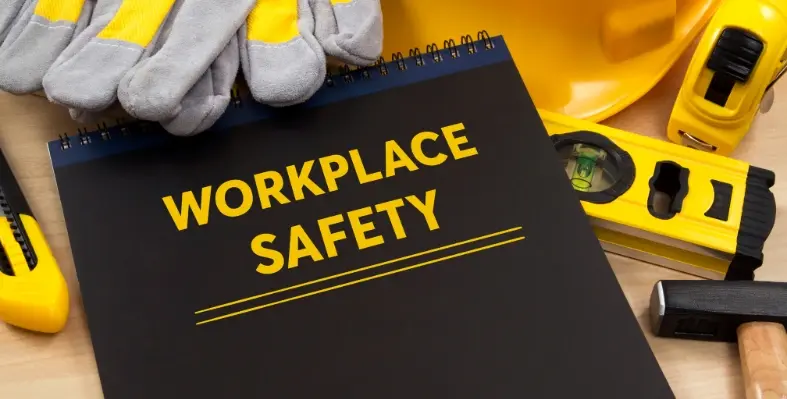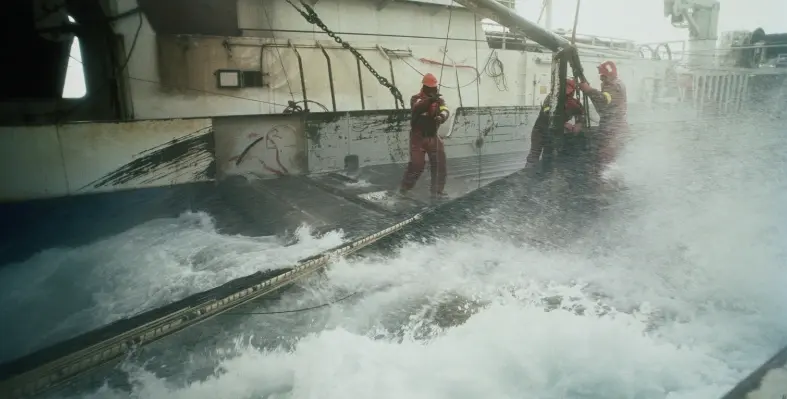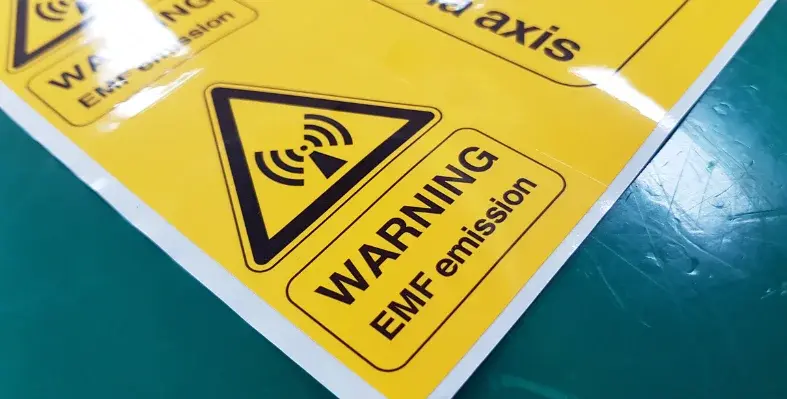Europe
Europe
- Date: 29 August, 2025
- Year: 2025
The Board of Certified Safety Professionals (BCSP) and the Institution of Occupational Safety and Health (IOSH) have signed a memorandum of understanding (MoU) designed to strengthen collaboration and provide safety professionals with greater recognition for their skills and experience.
As part of the agreement, Certified Safety Professionals (CSPs) can now apply for the CertIOSH membership grade. This credential highlights advanced safety leadership abilities and positions members one step closer to achieving Chartered Member of IOSH (CMIOSH), one of the most respected titles in the industry. More details on the application process are available on the CertIOSH webpage.
The partnership is reciprocal. BCSP has reaffirmed its recognition of CMIOSH and, for the first time, added Chartered Fellow of IOSH (CFIOSH) as credentials that meet its qualified credential requirement for CSP applicants. This means that IOSH members who hold either designation, and who also meet BCSP’s education and experience criteria, can apply directly for the CSP and complete the examination required to obtain it. Information for IOSH members interested in pursuing the CSP can be found on the BCSP website.
The agreement goes beyond credential recognition. Both organisations have committed to enhancing access to professional development opportunities and resources for their members worldwide. This includes joint initiatives to provide training, educational programmes and knowledge sharing that will support safety professionals in their career advancement.
Global safety standards
The collaboration is expected to benefit thousands of professionals globally who hold, or aspire to hold, either BCSP or IOSH designations. It reflects the growing need for international cooperation in occupational safety and health, especially as industries become more interconnected and as organisations seek consistent benchmarks for safety leadership.
Through this partnership, BCSP and IOSH reaffirm their commitment to advancing the profession and supporting safety practitioners in making workplaces safer worldwide.
“This collaborative approach to safety credentialing provides highly skilled safety professionals additional opportunities for recognition globally,” said BCSP Past President Ashok Garlapati, CSP, QEP, CFIOSH, FASSP. “This MoU is in line with BCSP's strategic objective of working toward global impact by expanding recognition and value of BCSP certification across international markets, ensuring cultural and regulatory relevance. I am glad to have worked alongside IOSH to enhance the careers of proven professionals from our organisations, building their influence so that they can better create a safer world.”
“As a body committed to championing the global occupational safety and health profession, we are delighted to sign this MoU. It sets out how we plan to continue engaging with BCSP, who we have been successfully collaborating with to drive global standards in occupational safety and health,” said Nicole Rinaldi, IOSH director of Professional Services. “IOSH members and CSPs share a dedication to ensuring people can go to work and return home without being harmed. We believe this MoU, by providing them with the opportunity to expand their credentials, will support them through greater professional recognition globally as well as enhance career development opportunities.”
- Topic: HSE
- Region: Europe
- Date: 19 August 2025
- Year: 2025
The six-month consultation seeks industry feedback on proposed restrictions on PFAS in firefighting foams
Proposed restrictions hope to combat the risks associated with per- and polyfluoroalkyl (PFAS) substances currently used in foams.
The UK Health & Safety Executive (HSE) has highlighted the risks associated with PFAS, including toxicity, with evidence suggesting PFAS can cause child developmental issues; cancer; and organ damage, mobility, as they easily travel through soil, water and air (with samples found in the Arctic); and persistence, with the chemicals known as 'forever chemicals'.
A six-month public consultation period, running until 18th February, 2026, hopes to establish stakeholder perspectives before introducing restrictions.
The director of the HSE's chemicals regulation division, Dr Richard Daniels, elaborated, "HSE’s proposals have been developed through robust scientific methodology and where possible we have spoken with interested parties from across Great Britain. Now we are looking for more information from our stakeholders.
"We’re seeking evidence-based feedback on our analysis to ensure any future restrictions are proportionate, effective and tailored to Great Britain’s specific needs."
- Date: 25 July 2025
- Year: 2025
A landmark Founding Declaration aimed at promoting safer, healthier, and more sustainable workplaces worldwide was signed as part of Expo 2025 in Osaka-Kansai, Japan this month.
The Declaration marks the launch of the World Assembly of Occupational Safety, Health, and Wellbeing Professionals and Stakeholders, a global network committed to driving collaboration, promoting safety and wellbeing, empowering future leaders, and developing a roadmap of concrete actions leading up to 2030.
The announcement took place during the four-day “Days on safety, health and wellbeing” programme, organised by the Global Initiative for Safety, Health and Wellbeing at the EXPO2025 and Beyond (GISHW).
It is the first time in more than 170 years that workplace safety and health has been spotlighted at a World Expo, underscoring how essential good work is to the Expo’s wider theme: “Designing future society for our lives.” The signing of the Declaration marks the beginning of a five-year collaboration to improve working conditions and protect lives and livelihoods around the globe.
Endorsed by global leaders in the occupational safety and health (OSH) field, the Declaration serves as both a foundation for action and a global call to prioritise health, safety and wellbeing in the world of work. It affirms that these principles are central to building equitable, inclusive, and resilient societies.
The World Assembly provides a unified platform to elevate these priorities, ensuring they remain central to global development conversations.
The signatories have pledged to promote workplace safety and wellbeing by integrating proactive risk management, inclusive design, and ethical technology.
They also aim to enhance international collaboration in response to major challenges such as digital transformation, climate change, and demographic shifts.
Future OSH leaders will be empowered through diverse representation and innovation, while a shared roadmap will guide collective actions through 2030 based on insights from Expo 2025 workshops.
The Declaration sets a clear intention to measure and share progress, with signatories committing to revisit these goals during the GISHW Days in Riyadh in 2030. The World Assembly will remain an active platform for dialogue, learning, and leadership, supporting a sustained global movement to place safety, health, and wellbeing at the heart of working life.
Founding signatories include companies and organisations such as ACWA Power, Siemens AG, GalaxyEDGE Safety Inc, Global Solutions Inc., IOSH, NEBOSH, RoSPA, Lloyd’s Register Foundation and others.
Marijana Zivkovic Mtegha, member of IOSH and chair of the World Assembly Working Group and vice-chair, GISHW Executive Committee, said, “In a rapidly changing world, driven by geopolitical and economic volatility, digital transformation, climate change and shifting demographics, the need for safe and healthy workplaces is more urgent than ever. This Declaration acknowledges that safety, health, and wellbeing are not only critical to the workplace but are fundamental to the broader societal agenda, including the UN’s 2030 Sustainable Development Goals, and beyond.”
- Topic: HSE
- Region: Europe
- Date: 15 July 2025
- Year: 2025
New research from Dräger finds that while 96% of employees feel safe at work, there are underlying issues that need to be addressed, such as inadequate training, outdated safety equipment, and poor psychological safety
65% of those surveyed for the Dräger Safety and Health at Work Report 2025, a study exploring attitudes to safety and health topics in UK workplaces, believe that a lack of psychological safety is contributing to physical safety risks in their workplace. Mental health and wellbeing issues are being seen as a lower priority compared to more ‘traditional’ health and safety issues.
There is also a growing concern that organisations are shifting too much responsibility for health safety on to individual employees rather than addressing systemic risks.
Meanwhile 73% indicate that safety training is simply a ‘tick box’ exercise, and 9% of workers said that they had had no safety training in the last five years.
Recent UK economic policy changes, particularly the increase in employer’s National Insurance (NI) contributions, are seen as likely to have a detrimental impact on safety in the workplace, with 77% saying that the recent changes to NI will impact health and safety budgets. This may be further exacerbated by the additional uncertainty created by US global policies in recent months. 66% say that they believe safety equipment in their company is inadequate, outdated or in need of repair.
Impact of AI
AI is seen as having potential to improve safety through automation and training simulations, with 44% of those surveyed believing it could reduce human error by automating repetitive safety checks. Other perceived benefits include improved employee training through immersive simulations, and identification and mitigation of potential hazards. However, 92% of respondents identify risks with AI implementation in the field of workplace safety in the next five years, with over-reliance on AI leading to complacency in safety practices (47%) seen as the leading concern, along with job losses, privacy concerns, and technical failures. There is a consensus that AI should support—not replace—human decision-making in safety-critical roles.
Despite an apparent significant focus by many businesses on the importance of sustainability, including in relation to health and safety procurement, there is a widespread belief that many companies are guilty of ‘greenwashing,’ undermining trust in sustainability and safety initiatives. While many firms show some progress in ESG areas like supply chain and energy use, few are seen as fully committed or transparent in their sustainability actions.
“We are observing the potential evolution of a cynical generation in the workplace – ‘Gen C’ – cynical about the intentions and motives of their employees, whether in providing safety training or in demonstrating their commitment to the environment,” the report comments.
Matthew Bedford, managing director, Draeger Safety UK Ltd commented, “The outlook for businesses continues to be extremely challenging, not least financially. However, it is vital that organisations also remain focused on fundamental issues such as the safety and wellbeing of their employees.
“My hope is that some of the issues highlighted in this year’s research will serve as a wake-up call to UK businesses.
“Despite the vast majority of people reporting that they do feel safe in their workplace, there are clear areas of dissatisfaction and cynicism across key areas which need addressing to prevent negative sentiment developing further."
- Date: 9 July, 2025
- Year: 2025
A report from Persistence Market Research looks at the number of ways occupational health and safety is changing around the world.
The research found that the global workplace safety systems market is undergoing a major transformation as organisations increasingly prioritise worker protection, regulatory compliance, and uninterrupted operations.
Rising incidences of workplace hazards, coupled with stricter safety regulations and growing awareness of employee well-being, are driving widespread adoption across sectors such as manufacturing, construction, energy, and healthcare.
According to Persistence Market Research, advanced safety technologies, which are ranging from fire suppression and gas detection to PPE monitoring and machine guarding, are now essential to modern industrial operations.
Among the fastest-growing segments are real-time monitoring systems and smart PPE, powered by AI and IoT. These innovations enable proactive risk detection and real-time compliance monitoring, reducing the likelihood of accidents and improving response times.
Europe trends
North America currently leads the global market, thanks to early adoption of advanced safety solutions and a robust regulatory environment, particularly under OSHA. However, Europe also holds a strong position, backed by EU-wide directives and investment in Industry 4.0.
Recently, a groundbreaking report from the European Trade Union Institute (ETUI) has, for the first time, put a price tag on the economic toll of work-related stress across the European Union, estimating it at over €100bn (US$105bn) annually.
The study, titled 'Work-related stress and cardiovascular diseases', highlights the staggering financial and human costs of workplace stress, linking it to cardiovascular diseases and mental health disorders like depression.
The ETUI report reveals that work-related stress contributes significantly to cardiovascular diseases, which account for a substantial portion of the €100 billion cost. These expenses stem from healthcare costs, lost productivity, and absenteeism due to stress-induced illnesses. The study also underscores the mental health impact, with depression caused by workplace stress adding to the economic strain.
Meanwhile, Asia Pacific is emerging as the fastest-growing region, propelled by rapid industrialisation, large-scale construction, and evolving government safety mandates in countries like China, India, and Japan.
Markets in Latin America and the Middle East & Africa are also expanding as awareness and enforcement of workplace safety continue to improve.
The adoption of technologies such as AI, wearable devices, cloud-based platforms, and smart analytics is reshaping how organisations manage safety. These tools offer real-time insights and predictive capabilities that turn reactive models into proactive strategies.
Wearable tech like smart vests and helmets with biometric sensors is enabling continuous health and hazard monitoring on the job.
However, challenges remain. High implementation costs, integration issues with legacy infrastructure, and concerns over data privacy, particularly with surveillance and wearables, can impede adoption.
Additionally, the lack of global standardisation complicates cross-border implementation.
Despite these hurdles, opportunities abound. Safety-as-a-service (SaaS) models are making cutting-edge solutions more accessible to smaller firms.
Digitisation, supported by cloud computing and data analytics, is enabling scalable, cost-efficient safety management systems.
As more regions develop formal safety mandates and the industrial sector modernises, the global workplace safety systems market is set for sustained growth, playing a crucial role in shaping the future of safe, efficient work environments.
- Date: 27 June, 2025
- Year: 2025
Marioff, a global leader in water mist fire protection, has introduced one of the fire protection industry's first Internet of Things (IoT) solutions specifically developed for high-pressure water mist systems.
This innovative technology enables continuous system visibility, real-time alerts, and centralised management, raising the standard for safety, operational efficiency, and reliability.
With over 30 years of experience developing the HI-FOG® fire protection system, Marioff continues to evolve its offering by integrating advanced digital capabilities.
The new IoT solution connects seamlessly with existing HI-FOG systems, allowing users to monitor system performance in real time, receive automated alerts for potential issues or maintenance needs, and manage multiple installations from a central interface.
The platform also provides actionable data insights to support predictive maintenance and enhance system reliability.
This marks a significant milestone in Marioff’s long-standing commitment to innovation and safety. As one of the pioneers of high-pressure water mist technology, the company is uniquely positioned to lead its evolution into the digital age.
The IoT solution will initially be made available to a select group of pilot users, with plans for a broader rollout to follow.
Internet of Things
Marioff’s latest development reflects its continued focus on engineering smarter, safer solutions that protect people, property, and operations.
“Our IoT solution marks a significant step forward in fire safety,” said Juha Ilvonen, CEO of Marioff. “It helps ensure systems are always monitored and ready—protecting people, property, and business continuity.”
The new system empowers users with remote access and centralised control across multiple sites.
“This technology gives customers full visibility of their HI-FOG system—no matter where they are,” added Samuli Bäck, manager, Connected Services. “It means faster decisions, proactive maintenance, and ultimately, safer environments.”
The Finland-based company describes its HI-FOG fire protection systems as the result of a simple yet powerful innovation: using high water pressure combined with specially designed sprinklers and spray heads to create a fine water mist that efficiently suppresses fires. This mist is precisely engineered for fire protection, using minimal water while maximising coverage and effectiveness.
Originally developed for large cruise ships, HI-FOG technology has evolved into a highly versatile solution now used in a broad range of settings, from industrial facilities to commercial and residential buildings.
Whether on land or at sea, HI-FOG high-pressure water mist systems deliver reliable fire protection and peace of mind.
Marioff’s advanced HI-FOG water mist fire suppression systems protect a diverse range of buildings, industrial processes, equipment, and critical infrastructure.
- Region: Europe
- Date: 17 Jun, 2025
- Year: 2025
Ocean workers, exposed to the escalating dangers of climate change, should be acknowledged as a frontline group in global efforts to mitigate its impacts, according to a new report by Lloyd’s Register Foundation.
The charity’s World Risk Poll Focus On: Risk Perceptions and Experiences of Ocean Workers reveals that these workers are among the most vulnerable to climate-related hazards, with 80% expressing concern about serious harm from severe weather.
The report draws on data from the 2024 World Risk Poll, conducted by Gallup, which surveyed 147,000 people across 142 countries.
It found that ocean workers are nearly three times more likely to identify climate change as the greatest risk to their daily safety (17%) compared to workers in other industries (6%).
The data underscores the unique challenges faced by those working at sea, where storms and unpredictable ocean conditions are intensifying.
According to the report, one in three ocean workers (33%) has experienced serious harm from severe weather in the past two years, compared to 20% of workers in other sectors.
The findings also highlight broader vulnerabilities.
Lack of training
Ocean workers reported the highest rates of workplace harm across all sectors, with 25% experiencing harm from their work in the past two years, compared to 18% of other workers.
Alarmingly, occupational safety and health (OSH) training is severely lacking, with 68% of ocean workers reporting they have never received such training, and only 25% having accessed it in the last two years.
Lloyd’s Register Foundation is urging governments, employers, and policymakers to recognise ocean workers as frontline workers in the context of climate change.
The charity calls for urgent action to improve safety training and protections to address the disproportionate risks faced by this group.
Nancy Hey, director of evidence and insight at Lloyd’s Register Foundation, said, “It is imperative that we prioritise OSH training for ocean workers and change the assumption that this must only be done once. Training is a continuous process, not a one-off event, which requires adequate funding and widespread industry support.
“Stronger safety standards must be tailored to the unique challenges of working on, or near, the water, including protections against severe weather and isolation-related stress. Without them, ocean workers, who play such a pivotal role in our global economy, will be at increasingly heightened risk as our climate continues to change.”
“However, their frontline status means ocean workers will also have knowledge and expertise on how we can safely adapt to climate change, and this is learning we should look to draw on in other sectors as they are also put under increasing climate-related stress.”
Professor Maximo Q. Mejia, Jr., president of the World Maritime University, said, “Seafaring and commercial fishing have traditionally been recognised as the world’s most hazardous occupations. Aside from already challenging conditions that have perennially been associated with shipboard life, our ocean workers face new and even more serious risks brought about by climate change. The World Risk Poll provides us with important and updated data and evidence that should inform any policy designed to protect not only our ocean workers, but the planet itself.”
Chirag Bahri, international operations manager at the International Seafarers Welfare and Assistance Network (ISWAN), and a former seafarer, commented, “In addition to the harsh weather, ocean workers have to deal with a variety of internal issues which lead to anxiety and stress, such as loneliness, working with a diverse and international crew, and being physically separated from their loved ones. This study emphasises that ocean workers are also subject to quiet storms in the form of insufficient training and fear of job loss. Their wellbeing is just as important as the work they do, so they should receive better training that helps to promote their occupational health and safety. The global economy depends on their resilience and power, and in order to safeguard the environment and humanity, we must adopt sustainable solutions.”
- Topic: HSE
- Region: Europe
- Date: 12 June
- Year: 2025
2025's edition of the Royal Society for the Prevention of Accidents (RoSPA) Health and Safety Awards, the 69th in the event's history, saw leaders from over 20 different sectors recognised with awards
Health and safety trailblazers united at the Grosvenor Hotel in London, hosted by comedian Ed Byrne and joined by special guests, including RoSPA chief executive Rebecca Hickman. Reflecting on the awards, Hickman said, "The RoSPA Awards shine a light on unsung heroes, whose hard work saves real lives. In a world where more than three million people die every year because of an accident, health and safety professionals like those we honoured are proof that it does not have to be this way."
Among the award winners were NSG Environmental Ltd., recognised as a leader in the Engineering Services sector, and the Department of Work and Pensions, recognised with the Public Services and Local Government sector award.
NEBOSH, the headline sponsor, were represented at the ceremony by chief quality officer Dee Arp, who said, "The Award winners have achieved the highest standards in health and safety, and raised the bar for the entire profession... as a fellow registered charity, we deeply value our longstanding partnership with RoSPA and the shared mission that unites us: to prevent accidents and protect lives—whether at work, at home, or in our communities."
- Topic: HSE
- Region: Europe
- Date: May 2025
- Year: 2025
After several industry experts, the Health and Safety Executive and MSA Safety united for a roundtable around workplace safety, the organisation has produced a follow-up whitepaper to address the stagnation in workplace accident and fatality figures
The roundtable centred around the statistic that 138 people lost their lives in workplace accidents in 2024—a figure which remains comparable to 2018/19 figures and defies ambition to reduce the risk of workplace incidents. 36% of those fatalities were due to falls from height.
Emphasising clear communication, safety education and PPE, the whitepaper identifies key improvement areas and barriers to improving workplace incident statistics and worker safety. Some of those barriers included human nature and poor equipment design.
Jason Anker, a safety advocate who suffered from a life-changing fall, was on the panel. He emphasised how a holistic safety culture must be cultivated, especially when working at height, to create meaningful improvements.
MSA Safety has published the full whitepaper and panel discussion on its site.
- Region: Europe
- Date: May 2025
- Year: 2025
Lloyd's Register Foundation's £15 million Global Safety Evidence Centre hopes to establish 'what works' in enforcing safety in the workplace, and plug solution gaps to improve industrial response to safety challenges
Citing the statistic that almost one in five workers (18%) experienced harm at work in the past two years, Lloyd's Register Foundation's centre invites industrialists to reach out for support and to partake in evidence-based initiatives.
Nancy Hey, Lloyd's Register Foundation's director of evidence and insight, said, "Evidence is critical to improving the safety of people and property; without it, we cannot fully understand the nature and scale of safety challenges faced by people around the world, nor what works to protect them from harm.
"However, around the world and across industrial sectors, many professionals, policy and decision-makers who need to consider safety do not have access to sufficient high quality evidence; either because it does not yet exist, or because it has not been collated and communicated to them in an understandable and actionable form."
Global researchers and safety practitioners are invited to apply for a share of £2 million put up by Lloyd's Register Foundation to support projects addressing evidence gaps in workplace safety.
- Region: Europe
- Year: 2025
A groundbreaking report from the European Trade Union Institute (ETUI) has, for the first time, put a price tag on the economic toll of work-related stress across the European Union, estimating it at over €100bn (US$105bn) annually.
The study, titled 'Work-related stress and cardiovascular diseases', highlights the staggering financial and human costs of workplace stress, linking it to cardiovascular diseases and mental health disorders like depression.
The ETUI report reveals that work-related stress contributes significantly to cardiovascular diseases, which account for a substantial portion of the €100 billion cost. These expenses stem from healthcare costs, lost productivity, and absenteeism due to stress-induced illnesses. The study also underscores the mental health impact, with depression caused by workplace stress adding to the economic strain.
In 2015 alone, the report estimates that more than 10,000 workers died, and over 400,000 years of life were lost due to cardiovascular diseases and depression caused by work-related psychosocial risks. “These are preventable deaths,” said Dimitra Theodori, Head of Health and Safety at ETUI. “We urgently need to redesign work environments to protect both mental and physical health.”
The report identifies significant variations in stress levels across EU member states, with countries like Poland reporting higher rates of workplace stress compared to nations such as the Netherlands and Switzerland. France, Belgium, Finland, Ireland and the Netherlands rank among the five countries most affected in terms of cost per 100,000 workers. The cost of depression attributable to all five PWEs is for instance 2.2 times higher in the Netherlands than in Poland per 100,000 workers, or 2.3 times higher in France than in Portugal.
Women workers are disproportionately affected by psychosocial risks such as excessive working hours, job uncertainty, and workplace bullying.
A Call for Action
The ETUI urges employers and EU institutions to treat work-related stress as an organisational issue requiring collective action. The report advocates for stronger workplace policies, including better stress management programmes, improved working conditions, and greater support for mental health. It also calls for regulatory measures to hold employers accountable for mitigating stress-related risks.
“While workplace fatalities have decreased over the years, the toll of psychosocial risks continues to rise—often invisible, yet devastating. It's time to treat mental well-being as a fundamental workplace right,” said Theodori.
The sentiment is echoed in the ETUI’s recommendations, which emphasize collaboration between employers, unions, and policymakers to reduce the burden of stress.
Broader Implications
The report’s release comes amid growing concern over workplace wellbeing in the EU, with 51% of workers reporting that stress is common in their workplaces and 40% believing it is poorly managed, according to EU-OSHA data. The ETUI’s findings align with these concerns, warning that unaddressed stress could undermine efforts to build resilient and sustainable economies.
Social media discussions on platforms like X have amplified the report’s impact, with users highlighting the €100 billion figure as evidence of systemic workplace issues. Posts describe the cost as a reflection of “conditions that make people stressed or unhappy at work,” urging political action to address deteriorating work environments.
- Region: Europe
- Date: 11 April, 2025
- Year: 2025
As EU-OSHA research reveals that tech innovation and emerging mental health issues are impacting workers, the association has unveiled a suite of resources (including dedicated publications) about the risks of 'invisible' challenges in the workplace
A dedicated 11-page publication, 'Electromagnetic fields: present and future challenges for occupational safety and health', examines the risks of electromagnetic fields, such as cancer, and discusses how excitement around the opportunities that EMFs present cannot be divorced from the risks and challenges they introduce to occupational health and safety.
Similarly invisible yet almost as devastating are the risks proposed by mental health challenges in the workplace. One such issue has been dubbed 'eco-anxiety', and refers to the worry induced by climate change and environmental damage. The 12-page 'Eco-anxiety and its implications for occupational safety and health' report hopes to explore how practitioners and policymakers can address eco-anxiety concerns and mental health challenges.
A full breakdown of emerging HSE risks and challenges has been added to EU-OSHA's website alongside the new publications.











